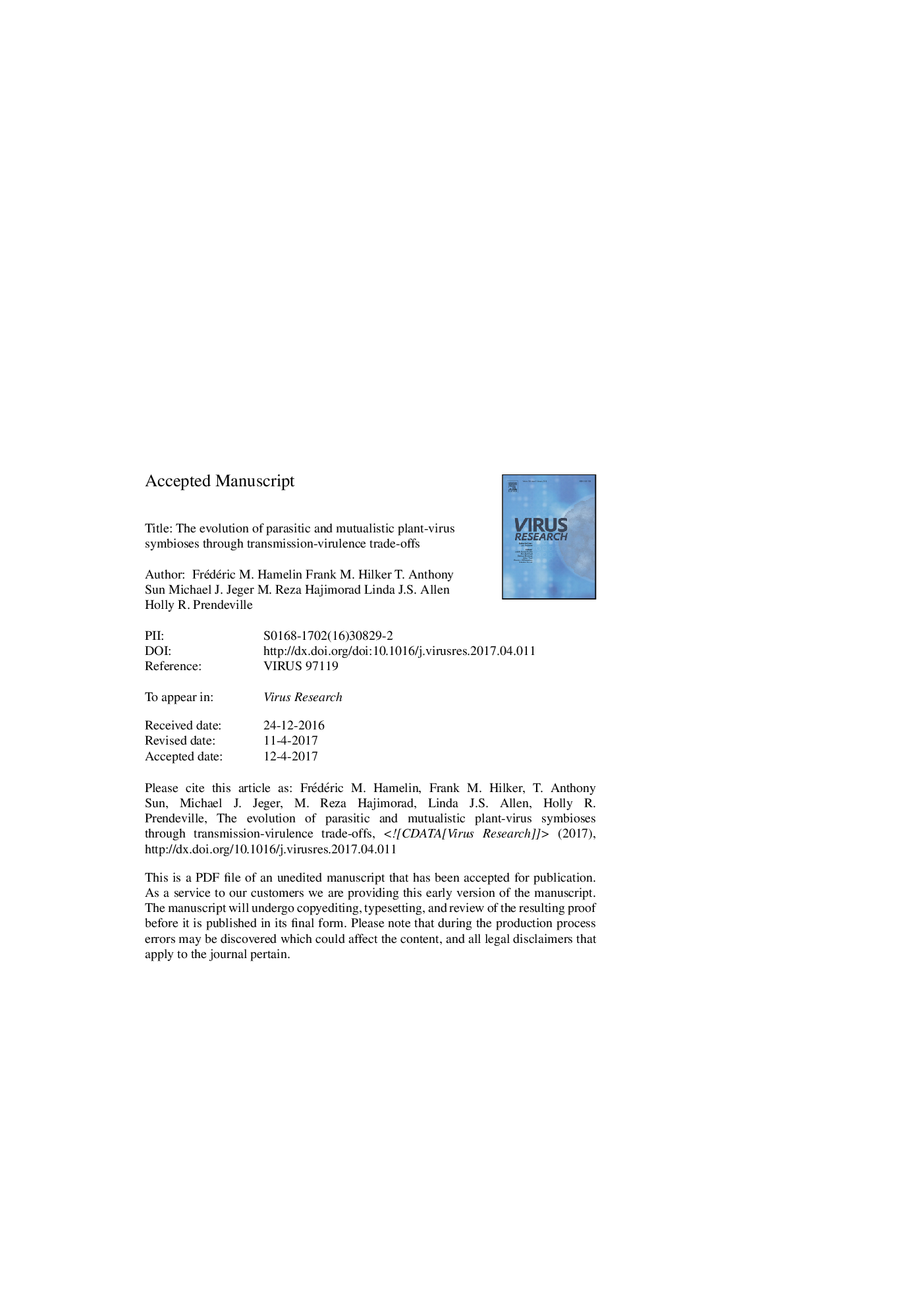| Article ID | Journal | Published Year | Pages | File Type |
|---|---|---|---|---|
| 8752087 | Virus Research | 2017 | 39 Pages |
Abstract
Virus-plant interactions range from parasitism to mutualism. Viruses have been shown to increase fecundity of infected plants in comparison with uninfected plants under certain environmental conditions. Increased fecundity of infected plants may benefit both the plant and the virus as seed transmission is one of the main virus transmission pathways, in addition to vector transmission. Trade-offs between vertical (seed) and horizontal (vector) transmission pathways may involve virulence, defined here as decreased fecundity in infected plants. To better understand plant-virus symbiosis evolution, we explore the ecological and evolutionary interplay of virus transmission modes when infection can lead to an increase in plant fecundity. We consider two possible trade-offs: vertical seed transmission vs infected plant fecundity, and horizontal vector transmission vs infected plant fecundity (virulence). Through mathematical models and numerical simulations, we show (1) that a trade-off between virulence and vertical transmission can lead to virus extinction during the course of evolution, (2) that evolutionary branching can occur with subsequent coexistence of mutualistic and parasitic virus strains, and (3) that mutualism can out-compete parasitism in the long-run. In passing, we show that ecological bi-stability is possible in a very simple discrete-time epidemic model. Possible extensions of this study include the evolution of conditional (environment-dependent) mutualism in plant viruses.
Related Topics
Life Sciences
Immunology and Microbiology
Virology
Authors
Frédéric M. Hamelin, Frank M. Hilker, T. Anthony Sun, Michael J. Jeger, M. Reza Hajimorad, Linda J.S. Allen, Holly R. Prendeville,
